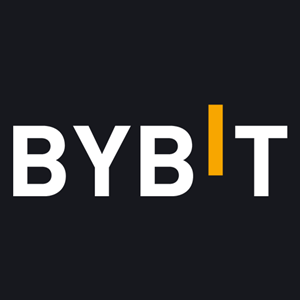Initial Coin Offerings (ICOs) vs. Initial Exchange Offerings (IEOs): A Comparative Guide June, 2025
ICOs and IEOs offer two distinct paths for launching crypto tokens, one decentralized and open, the other secure and exchange-backed. This guide breaks down their mechanics, risks, investor experience, and real-world outcomes to help you choose the right model.
 Written by Nikolas Sargeant
Written by Nikolas Sargeant
| Fees | Deposit Methods | |||||||||
|---|---|---|---|---|---|---|---|---|---|---|
| Nom | Cryptos prises en charge | Taker | Maker | Withdrawal | Wire | Credit | É-U Autorisé | Active Since | Offer | |

Bybit
Contract Trading Exchanges
|
182 | 0.06% | 0.01% | 0.0005 | 2018 |
OBTENEZ JUSQU'À 600 USD DE RÉCOMPENSES
|
Visitez | |||

PrimeXBT
Contract Trading Exchanges
|
34 | 0.01% | 0.02% | 0.0005 | 2018 |
GET UP TO $100 IN SIGN-UP BONUS
|
Visitez | |||

ChangeNOW Exchange
Centralized Exchanges
|
604 | 1.00% | 1.00% | 0.000079 | 2017 |
BUY, SELL AND SWAP CRYPTO - SIMPLE AND FAST!
|
Visitez | |||
|
Phemex
Contract Trading Exchanges
|
150 | 0.06% | 0.01% | 0.0004 | 2019 |
OBTENEZ JUSQU'À 180 USD DE BONUS DE DÉPÔT
|
Visitez | |||

Coinbase
Centralized Exchanges
|
136 | 2.00% | 2.00% | 0.000079 | 2012 |
GET USD 5 SIGN-UP BONUS!
|
Visitez | |||
| Characteristics | Functionality | |||||||||
|---|---|---|---|---|---|---|---|---|---|---|
| Nom | Cryptos prises en charge | Security | Anonymity | Ease of Use | Buy & Sell | Vouchers & Gift Cards | Debit Card | Platforms | Score de l’utilisateur | |
| 2 |
|
|||||||||
In the fast-paced world of cryptocurrency, launching a new token isn’t just about code, it’s about funding. Two popular methods stand out: Initial Coin Offerings (ICOs) and Initial Exchange Offerings (IEOs). While both serve as launchpads for crypto projects, their mechanics, risks, and trust levels differ dramatically.
Token fundraising emerged as a revolutionary way for startups to bypass traditional venture capital, allowing projects to raise millions from a global pool of crypto investors. Unlike IPOs (Initial Public Offerings) in traditional finance, these methods don’t always require regulatory approval or institutional backing, opening the door for rapid innovation, but also significant risk.
ICOs involve direct sales of a new token from the project team to the public, typically in exchange for popular cryptocurrencies like Ethereum or Bitcoin. IEOs, on the other hand, shift that process to a trusted exchange platform, which hosts and oversees the token sale on behalf of the project.

This guide breaks down the differences between these two models, how they work, their benefits, their drawbacks, and which might be right for you as either an investor or project founder. We’ll also spotlight real-world examples and mention key exchanges like Bybit, Coinbase, and ChangeNOW to give context to how these offerings play out in practice.
What is an ICO?
An Initial Coin Offering (ICO) is one of the earliest and most recognized methods of crypto fundraising. It allows blockchain projects to raise capital by directly selling newly issued tokens to early supporters, typically before the product is live. In return, investors hope the tokens will appreciate in value once the project launches or gains traction.
ICOs reached peak popularity in 2017–2018, during the height of the crypto boom. Projects like Ethereum (which raised $18 million in 2014) and EOS (which famously raised over $4 billion across a year-long token sale) demonstrated the massive potential of ICOs to fund innovative protocols without giving up equity or control.
How ICOs Work
At their core, ICOs are simple: a team builds a whitepaper, launches a website, and accepts contributions, often in Ethereum or Bitcoin, in exchange for their native tokens. No centralized platform or exchange is required. Participants simply send funds to a smart contract or project wallet and receive tokens in return.

Because there’s no formal vetting process, virtually anyone can launch an ICO. This accessibility contributed to the explosive growth of the model, but also to its volatility and reputation for scams.
Pros of ICOs
- Greater control for the project: No intermediary exchange dictating terms or taking a cut.
- Wider access to international investors: Open participation from any region (subject to local laws).
- Lower listing requirements: No need for a vetting or compliance process through an exchange.
Cons of ICOs
- High risk of scams and rug pulls: Projects can vanish overnight with investors’ money.
- Regulatory uncertainty: Many governments now view unregistered ICOs as securities offerings.
- Lack of due diligence: Investors must conduct their own research; no third party ensures legitimacy.
Despite the risks, ICOs remain appealing to projects focused on decentralization and to communities comfortable with high-risk, high-reward environments. However, as regulation increases and trust becomes more critical, many newer projects have shifted to safer, more structured methods like IEOs.
What is an IEO?
An Initial Exchange Offering (IEO) is a modern evolution of the ICO model. Instead of the project team conducting a token sale independently, an IEO is hosted and managed by a cryptocurrency exchange. This shift adds a layer of oversight and trust, two elements the ICO model often lacked.

In an IEO, the exchange acts as both gatekeeper and facilitator. The project submits its token and fundraising plans to the exchange, which conducts due diligence, audits the whitepaper, and often requires legal documentation and compliance checks. If approved, the token is offered for sale on the exchange’s platform, typically in exchange for the platform’s native token (like BNB on Binance or BIT on Bybit).
This structure provides benefits for both the project and the investor. For the project, it offers immediate exposure to the exchange’s user base and often guarantees post-sale token listing, solving a common challenge for ICOs. For investors, it adds a level of reassurance knowing that the project has passed through a basic vetting process.
How IEOs Differ Structurally from ICOs
- ICOs are decentralized and self-run by project teams.
- IEOs are centralized offerings run through an exchange, which hosts the sale and often enforces user KYC/AML verification.
- IEOs typically offer tokens directly into the user’s exchange wallet, while ICOs may require manual wallet setup and token claims.
Many leading exchanges now offer IEO platforms as part of their services. Popular exchanges like Bybit, Phemex, and ChangeNOW Exchange have offered IEO platforms as a more secure alternative to traditional ICOs. These platforms promote selected projects, help manage marketing, and often cap the maximum allocation per user to avoid large holder imbalances.
IEO Characteristics:
- Token sale hosted on exchange
- Exchange vets the project before listing
- Buyers must use the exchange's native token or platform to participate
- Built-in compliance with KYC and AML policies
- Typically includes guaranteed post-sale listing
IEOs rose to prominence after the ICO boom cooled, offering a more structured way to participate in token fundraising while reducing fraud and regulatory risk. While they are not foolproof, they represent a shift toward greater accountability and user safety in the crypto fundraising space.

Key Differences Between ICOs and IEOs
While Initial Coin Offerings (ICOs) and Initial Exchange Offerings (IEOs) both aim to raise capital by selling tokens to investors, their underlying mechanics, trust structures, and user experiences vary significantly. Understanding these differences is critical for anyone deciding how to launch, or invest in, a new crypto project.
Let’s break down the key contrasts in structure, security, investor confidence, and outcomes.
1. Fundraising Structure
At the most basic level, ICOs are project-led, while IEOs are exchange-hosted.
In an ICO, the team behind the crypto project creates the fundraising campaign independently. They host the sale on their own website or through a smart contract, accept funds directly (usually in ETH or BTC), and manually distribute tokens.
In an IEO, the process is facilitated through an exchange like Bybit, Phemex, or ChangeNOW Exchange. The exchange vets the project, handles marketing, oversees the token sale, and ensures distribution through its own platform, often requiring participants to use the exchange’s native token or trading interface.
2. Investor Trust and Security
One of the biggest drawbacks of ICOs is the trust gap. Since there’s no third-party review, investors must conduct their own due diligence. Unfortunately, many ICOs during the 2017 boom turned out to be scams or failed ventures, causing widespread skepticism.

IEOs, in contrast, leverage the trust and brand reputation of established exchanges. Platforms like Phemex and Bybit act as gatekeepers, performing audits and legal reviews before approving a token sale. While not immune to failure, this layer of vetting can reduce fraud and increase investor confidence.
3. Compliance and Regulation
ICOs operate in a regulatory gray area. Many regulators (such as the SEC in the U.S.) consider ICOs to be unregistered securities offerings. This has led to lawsuits and fines for numerous projects.
IEOs are often better positioned to comply with KYC/AML regulations, as exchanges are already licensed or registered in various jurisdictions. Users typically must verify their identity before participating, offering more protection for both the platform and investor.
4. Post-Sale Token Listing
After an ICO, there’s no guarantee the token will be listed on a major exchange, which can leave investors stuck with illiquid assets.
With IEOs, however, the token is usually listed immediately on the host exchange once the sale concludes, giving investors an exit option and liquidity from day one.
Comparison Table: ICO vs. IEO
|
Feature |
ICO |
IEO |
|
Fundraising Host |
Project team |
Crypto exchange |
|
Vetting & Due Diligence |
None (self-managed) |
Performed by the exchange |
|
Investor Trust |
Low |
Higher (exchange reputation) |
|
User Requirements |
Often no KYC |
KYC/AML mandatory |
|
Token Distribution |
Manual or via smart contract |
Automatic via exchange wallet |
|
Post-Sale Listing |
Not guaranteed |
Typically guaranteed on hosting exchange |
|
Risk Level |
High (scams, fraud) |
Moderate (exchange-vetted) |
Real-World Example Comparison
- EOS (ICO): Raised over $4 billion between 2017 and 2018 through a year-long ICO. Despite the massive funding, the project faced scrutiny for delayed development and unclear product delivery. It became a poster child for ICO excess.
- BitTorrent (IEO on Binance Launchpad): Raised $7.2 million in under 15 minutes in 2019. The IEO format enabled a fast, streamlined experience for investors with tokens distributed immediately and trading available within days. The sale helped establish Binance as a credible launchpad platform.
These examples highlight not just the difference in scale and execution, but also investor experience. EOS investors waited months for updates. BitTorrent token holders had liquidity and visibility almost immediately.

User Experience & Investor Journey
The experience of participating in a token sale, whether via an ICO or IEO, can vary dramatically depending on the model chosen. For investors, ease of access, technical requirements, and perceived safety play a major role in how approachable each option feels.
ICO: A DIY Experience
With an ICO, the process often feels like navigating uncharted territory. Investors must:
- Visit the project’s standalone website
- Set up a compatible wallet (e.g., MetaMask or a hardware wallet)
- Send cryptocurrency (often ETH or BTC) to a specific address
- Manually add the new token to their wallet
This approach offers flexibility and decentralization but assumes a high level of technical knowledge. Mistakes, like sending funds to the wrong address or using an incompatible wallet, are irreversible. There’s also little to no customer support if something goes wrong.
IEO: Streamlined and Secure
IEOs significantly improve the investor journey by integrating every step into a single platform. Exchanges like Coinbase, Bybit, and PrimeXBT handle:
- Identity verification (KYC/AML)
- Wallet setup
- Token purchase
- Token distribution
Participants simply log into their exchange account, complete KYC once, and access token sales with a few clicks, often using the exchange’s native token. Tokens are automatically deposited into the user’s exchange wallet post-sale, eliminating setup friction.

For newer or less technical investors, this simplicity is game-changing. There’s no need to interact with smart contracts or manage complex wallet configurations. Plus, exchanges typically offer support and educational resources that help users navigate the process with confidence.
In short, ICOs cater to crypto-native users who value autonomy and risk-taking, while IEOs prioritize accessibility, onboarding, and safety, making them more attractive to mainstream and first-time investors.
Regulatory Landscape & Risk Factors
Regulation has always been a double-edged sword in the crypto space, seen by some as a threat to innovation, and by others as necessary protection for investors. When it comes to ICOs and IEOs, the legal landscape and associated risks are dramatically different.
ICOs: Regulatory Red Flags
ICOs operate in a regulatory gray zone. In many jurisdictions, including the United States, regulators like the Securities and Exchange Commission (SEC) consider ICO tokens to be securities. This means that unless the offering is registered or exempt, it could be deemed illegal.
In the wake of the 2017–2018 ICO boom, dozens of projects faced lawsuits, fines, or outright shutdowns. A lack of Know Your Customer (KYC) and Anti-Money Laundering (AML) protocols also opened doors for fraud, money laundering, and other illicit activity. For investors, this creates a high-risk environment, where losing your investment due to regulatory action is just as real as losing it to a failed project.
IEOs: More Compliance, Less Chaos
IEOs emerged in part as a response to the chaos of the ICO era. By routing the token sale through a centralized exchange, IEOs impose a layer of regulatory discipline that ICOs lack. Participating exchanges like Bybit and ChangeNOW Exchange often require full KYC verification before users can contribute to token sales, and they perform due diligence on the projects themselves.
This structured approach offers two key advantages:
- Reduced legal risk for investors, since sales are usually designed to comply with local laws.
- Increased accountability for project teams, as exchanges won’t risk their reputation on low-quality or non-compliant offerings.
Still, IEOs are not bulletproof. Regulatory frameworks for token sales remain inconsistent around the world, and exchanges aren’t formal financial regulators. A project can still fail after a successful IEO, and due diligence standards vary from one platform to another.

In summary, ICOs present substantial regulatory and legal risks, particularly in tightly governed regions. IEOs offer a safer middle ground by incorporating exchange oversight and compliance measures, but investors should still tread carefully and do their own research.
Project Perspective: Launching via ICO vs. IEO
From a project founder’s perspective, choosing between an ICO and an IEO isn’t just a technical decision, it’s a strategic one that can define the trajectory of the token launch and long-term community growth.
Why Launch via ICO?
For teams who prioritize independence and decentralization, ICOs offer maximum control. There’s no intermediary exchange taking a cut, setting rules, or imposing listing requirements. You set the price, timeline, fundraising cap, and investor terms.
This approach is especially attractive to developers in the DeFi or privacy space who want to stay true to the crypto ethos. However, without built-in visibility or trust, projects must invest heavily in marketing, community building, and legal compliance to be successful, and even then, securing a post-sale exchange listing is not guaranteed.

Why Launch via IEO?
IEOs solve many of the problems that ICOs introduce. When a project partners with an exchange like Phemex or ChangeNOW Exchange, it gains:
- Immediate exposure to the exchange’s user base
- Technical support and infrastructure
- An established trust layer through the exchange’s reputation
- Guaranteed listing post-sale
These advantages can dramatically increase fundraising success while removing friction for users.
Scenario: Imagine launching a new gaming-based token. Running your own ICO might offer creative freedom, but partnering with Phemex for an IEO means your token gets listed instantly, promoted through their launchpad, and distributed to thousands of KYC-verified users. That kind of boost can be game-changing, especially in a competitive market where speed and visibility matter.
Of course, exchanges charge fees, and they’ll expect a level of readiness and professionalism before agreeing to host your project. However, the exposure and trust can far outweigh the cost for well-prepared teams.

Case Study Breakdown: BitTorrent (IEO) vs. EOS (ICO)
To fully grasp the differences between ICOs and IEOs, it helps to look at real-world examples that highlight how each model plays out in practice. Two standout cases, BitTorrent and EOS, showcase the potential, risks, and long-term impact of each fundraising method.
BitTorrent (IEO on Binance Launchpad)
In January 2019, BitTorrent conducted one of the first high-profile IEOs on Binance Launchpad. The sale raised $7.2 million in under 15 minutes, selling out nearly instantly due to overwhelming demand. Investors used Binance Coin (BNB) to purchase BTT tokens, and the tokens were distributed automatically to exchange wallets after the sale.
Why it worked:
- Trust in Binance: The exchange’s vetting of BitTorrent gave retail investors confidence.
- Simplicity: Users already verified on Binance could participate with just a few clicks.
- Immediate listing: BTT was available for trading almost immediately, creating liquidity and hype.
BitTorrent's IEO marked a turning point, it introduced a streamlined, secure, and highly visible path to fundraising that contrasted sharply with the chaos of earlier ICOs.
EOS (ICO)
On the other end of the spectrum is EOS, which ran one of the most ambitious and controversial ICOs in crypto history. From June 2017 to June 2018, the project raised over $4 billion, entirely through a year-long public token sale hosted independently by the project’s parent company, Block.one.
What stood out:
- Massive scale: The $4B raise remains one of the largest in crypto.
- Global access: With no exchange intermediary, investors from around the world participated freely.
- Regulatory trouble: In 2019, Block.one settled with the U.S. SEC for $24 million for conducting an unregistered securities offering.
Despite the funding, EOS faced backlash for delays, unclear governance, and technical issues. Many investors saw limited returns, and questions remain about whether the raised capital translated into meaningful impact.

Comparison Insights
- Speed: BitTorrent's IEO was fast and efficient; EOS dragged over a year.
- Security & trust: Binance’s involvement gave BitTorrent legitimacy; EOS had to build its own.
- Regulatory exposure: IEOs tend to be more compliant; EOS’s ICO attracted enforcement.
These case studies highlight a central truth: while ICOs offer freedom and potential scale, IEOs offer structure, safety, and speed. The best choice depends on the project’s goals, and its appetite for risk.
Which Is Right for You? (Investor & Founder Guidance)
Choosing between an ICO and an IEO depends entirely on your role and risk appetite. Both models have distinct advantages, but they’re designed for different kinds of users and goals.
For Investors
If you’re an investor looking for ease, safety, and structure, an IEO is likely the better option. Platforms like Bybit, Coinbase, and PrimeXBT handle the technical complexity and provide a layer of due diligence that ICOs usually lack.
Choose IEO if you:
- Want built-in KYC and fraud protection
- Prefer a fast, simple onboarding experience
- Value immediate token liquidity and exchange listings
On the other hand, ICOs might appeal to high-risk investors who are early adopters seeking projects with untapped upside, despite minimal oversight.
Only consider ICOs if you:
- Are comfortable with smart contracts, wallet management, and token claims
- Have strong research skills to vet projects independently
- Understand and accept the risk of losing your investment
For Project Founders
Your decision should be guided by your project’s priorities.
Choose ICO if you:
- Want full control over the fundraising process
- Are targeting a niche, decentralized-first community
- Are confident in your ability to manage community trust and post-sale operations
Choose IEO if you:
- Need a marketing boost and access to a ready user base
- Want to leverage an exchange’s credibility
- Value instant token listing and a smoother compliance path
Ultimately, the right approach depends on whether your priority is control or credibility, freedom or trust. There’s no universal answer, but there is a best fit for your specific strategy.

Final Thoughts & Future of Token Fundraising
The world of token fundraising is constantly evolving. While ICOs opened the floodgates to global, decentralized capital, they also exposed the crypto space to regulatory crackdowns and investor mistrust. In response, IEOs emerged as a more structured, exchange-backed solution, prioritizing trust, compliance, and user experience.
But even these models are just steps in a broader journey. Today, IDOs (Initial DEX Offerings), Launchpads, and token auctions on decentralized protocols are gaining traction, offering hybrid approaches that blend decentralization with security features.
Still, the core questions remain: How do you raise capital responsibly? How do you balance investor protection with innovation?
Projects must increasingly consider jurisdictional compliance, investor education, and long-term token utility. Meanwhile, investors must weigh not just potential returns, but who’s vetting the project, how tokens are distributed, and what real-world value the offering represents.
Exchanges like Bybit, Phemex, and ChangeNOW Exchange are helping raise the bar by introducing transparency into the launch process. Whether the future leans toward IEOs, regulated ICOs, or entirely new models, one thing is clear: the next wave of successful token projects will be built not just on hype, but on trust, usability, and sustainable value.
| Fees | Deposit Methods | |||||||||
|---|---|---|---|---|---|---|---|---|---|---|
| Nom | Cryptos prises en charge | Taker | Maker | Withdrawal | Wire | Credit | É-U Autorisé | Active Since | Offer | |

Bybit
Contract Trading Exchanges
|
182 | 0.06% | 0.01% | 0.0005 | 2018 |
OBTENEZ JUSQU'À 600 USD DE RÉCOMPENSES
|
Visitez | |||

PrimeXBT
Contract Trading Exchanges
|
34 | 0.01% | 0.02% | 0.0005 | 2018 |
GET UP TO $100 IN SIGN-UP BONUS
|
Visitez | |||

ChangeNOW Exchange
Centralized Exchanges
|
604 | 1.00% | 1.00% | 0.000079 | 2017 |
BUY, SELL AND SWAP CRYPTO - SIMPLE AND FAST!
|
Visitez | |||
|
Phemex
Contract Trading Exchanges
|
150 | 0.06% | 0.01% | 0.0004 | 2019 |
OBTENEZ JUSQU'À 180 USD DE BONUS DE DÉPÔT
|
Visitez | |||

Coinbase
Centralized Exchanges
|
136 | 2.00% | 2.00% | 0.000079 | 2012 |
GET USD 5 SIGN-UP BONUS!
|
Visitez | |||
| Characteristics | Functionality | |||||||||
|---|---|---|---|---|---|---|---|---|---|---|
| Nom | Cryptos prises en charge | Security | Anonymity | Ease of Use | Buy & Sell | Vouchers & Gift Cards | Debit Card | Platforms | Score de l’utilisateur | |
| 2 |
|
|||||||||
